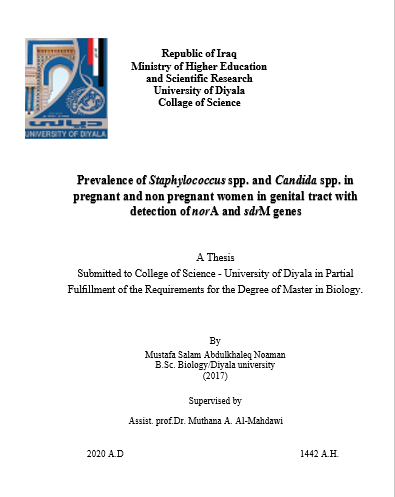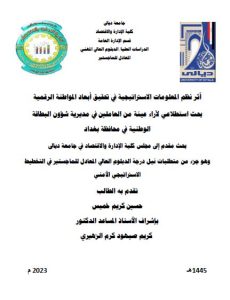Summary
A cross sectional study was conducted to assess the prevalence of Gram positive bacteria and fungi that cause infections among female genital tract. This study included 500 vaginal swabs that were collected from women in Al-Batoul Teaching Hospital in Diyala-Iraq for the period from October 2019 to February 2020. The samples included 333 pregnant and 167 non-pregnant women with age group ranging from 13 – 59 years old. The results of the routine diagnostic test, that was confirmed by using VITEK comparte 2 system showed that there was a diversity of bacterial and fungi species, where the S. aureus bacteria had the highest rate of isolation in 23.8%, followed by E. coli, S. epidermidis, Klebsiella spp., pseudomonas spp., and S. saprophyticus (16.3%, 12.6%, 9.3%, 2.8% and 1.8% respectively). C. albicans was the predominant fungi isolated which was (21.9%) followed by C. tropicalis, C. parapsilosis, C. glabrata and C. krusei (4.2%, 3.7%, 2.8% and 0.50% respectively). The investigation of virulence factors showed that S. aureus can produce haemolysin with percentage of 90%. The results showed that (62.7%) of S. aureus isolates have the ability to adhere on the surface of epithelial cells while S. epidermidis and S. saprophyticus can adhere by (77.7% and 75% respectively). In this study, the results showed a variation of resistance to the antibiotics, Trimethoprim was the most resisted antibiotic by Staphylococci (53.6%) followed by Erythromycin and Trimethoprim/sulfamethoxazole (48.7% and 46.8% respectively), while 97.5% of bacterial isolates were sensitive to Imipenem, followed by Vancomycin and Clindamycin (68.2% and 67% respectively). The results showed that Caspofungin was the most effective antifungal against Candida spp. (85.9%), while Fluconazole was the least effective antifungal against Candida spp. by (63.3%). The results of the molecular study showed that there is a wide distribution of norA (94.54%) and sdrM (90.90%) genes among MDR isolates which harbor the characteristic of resistance to three or more antibiotic classes.





